Grand Seiko T0 Constant Force Tourbillon: I Couldn’t Believe My Eyes
Editor’s note: The Grand Seiko Kodo Constant Force Tourbillon won the Chronometery prize at the 2022 Grand Prix d’Horlogerie de Genève (GPHG). Below Joshua Munchow describes his reaction on first seeing the movement in 2020 and describes what makes it so special.
I remember waking up on September 2, 2020 after six brutal months of a pandemic making pretty much everyone except billionaires miserable and opening my social media to scroll while I brushed my teeth and got ready for work. As I swiped through posts on Instagram I stopped in my tracks, toothbrush dangling from my gaping mouth, eyes wide, and one singular thought running through my head as I stare at my phone.
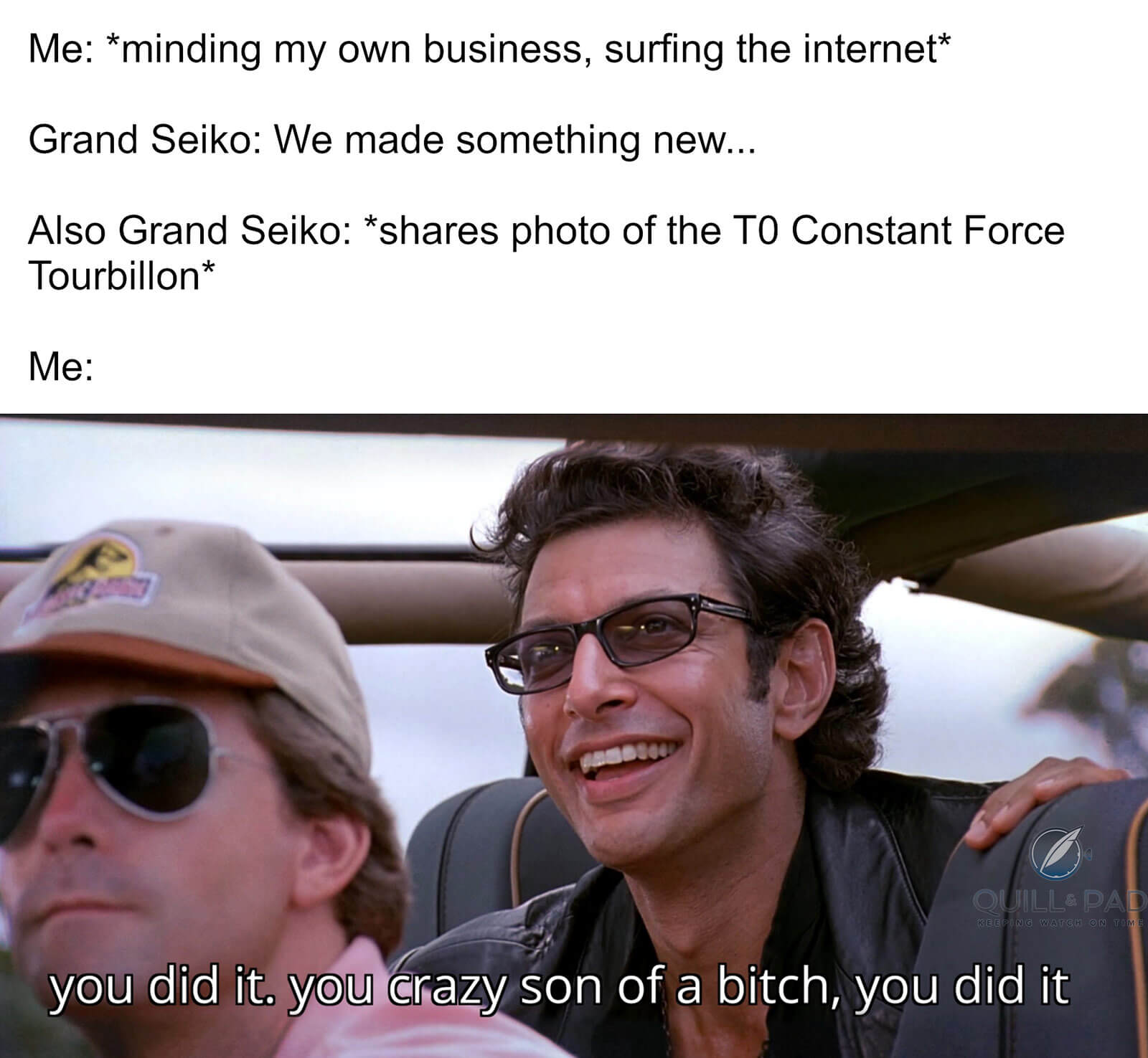
Right there, perfectly framed among the fast cars, memes, food, travel shots, and a ridiculous number of self-proclaimed “influencers” was a tantalizing image of a crazy tourbillon movement, clearly brand new and stunning. But this watch wasn’t from some edgy independent brand; no, the account that posted it was none other than Grand Seiko.
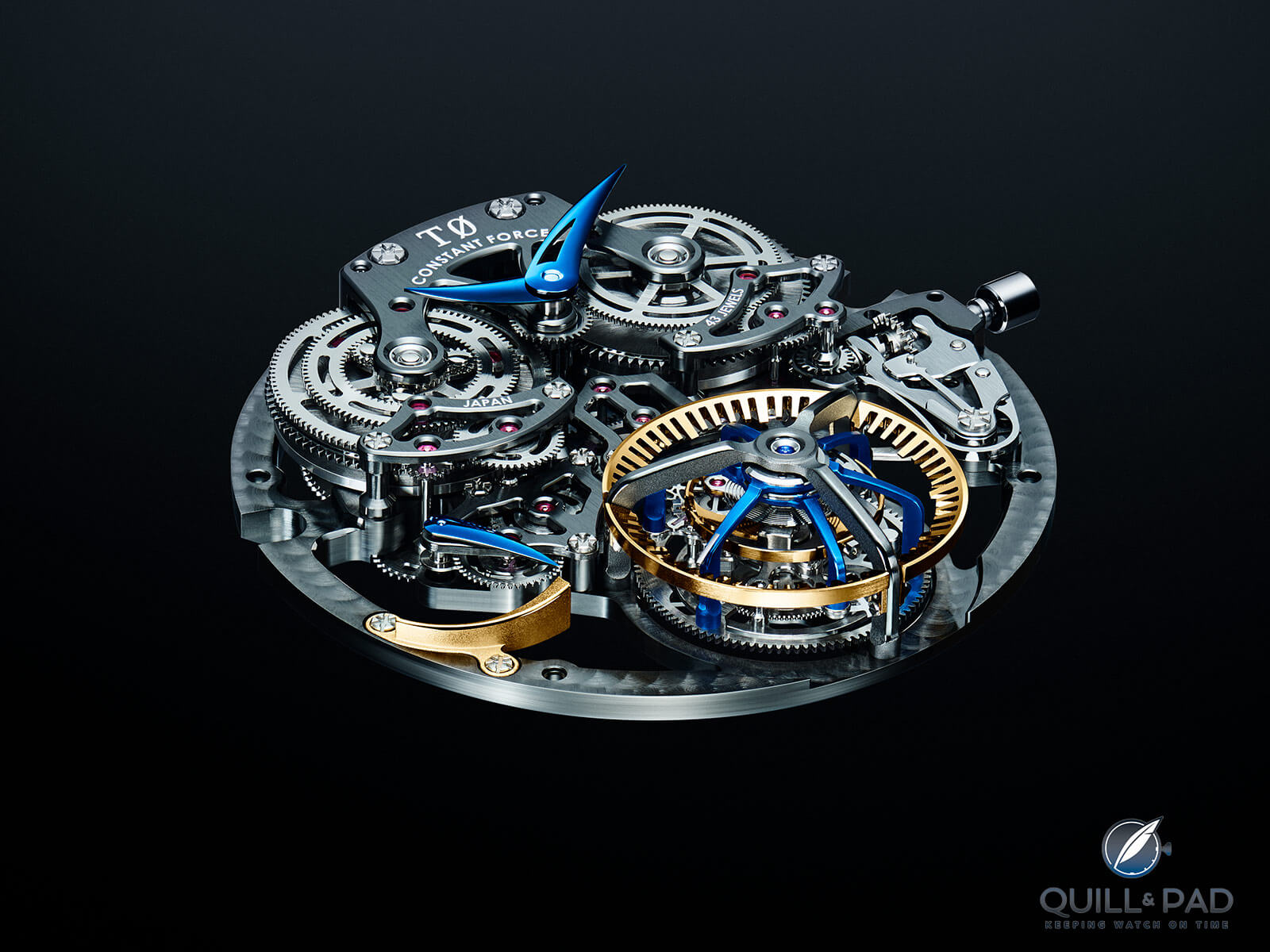
Grand Seiko T0 Constant Force Tourbillon
This can’t be . . . Grand Seiko doesn’t make movements like this. This is an avant-garde tourbillon movement with a constant force escapement and incredible exposed mechanics! But it is indeed from the oft-humble Japanese brand. Grand Seiko has created a movement that not a single Swiss fanatic will be able to (honestly) criticize because it’s amazing. AND it’s from Grand Seiko.
I’ve always appreciated the brand and the ethos behind what it creates, but I understand where some people are coming from when they point out that Grand Seiko just lacks some of the pizazz of the Swiss or German brands.
The Japanese aesthetic usually isn’t about bravado or pomp and circumstance, but rather good, honest, and precise watchmaking.
But the T0 Constant Force Tourbillon is what happens when you take good, honest, and precise watchmaking and mesh it with the kind of crazy and bold mechanics usually only found in the Jura valleys. This one comes from an island in the Ring of Fire, which is fitting for a movement like this.
Not only is it aesthetically unlike your typical Grand Seiko movement, it is also mechanically groundbreaking, and, most frustratingly, only a concept movement.
But don’t let that distract you: this movement is one of the best horological things to come out of the watch industry in 2020, which honestly was a surprisingly good year given everything else that happened.
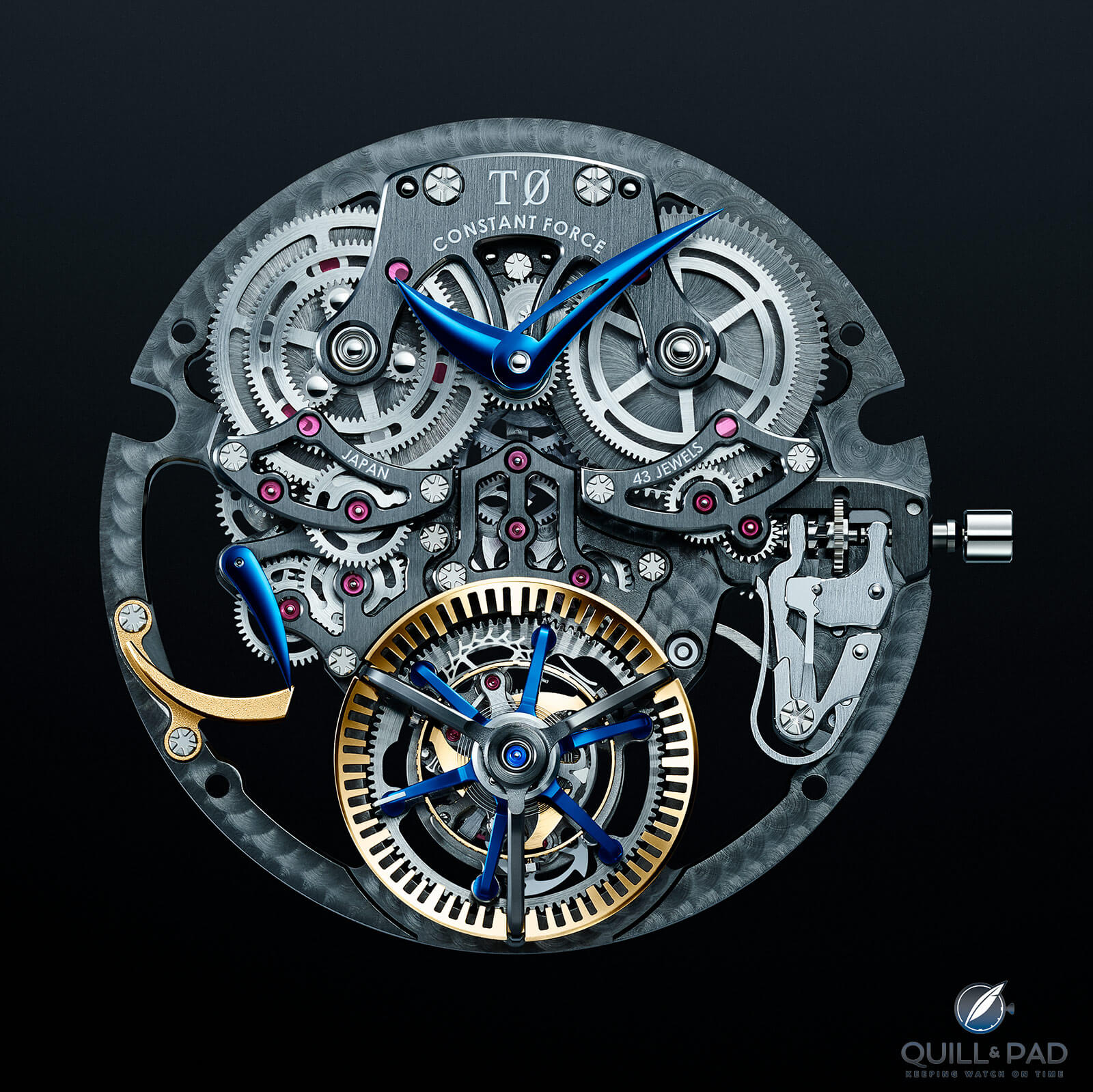
Grand Seiko T0 Constant Force Tourbillon
So let’s dig into this bad boy and see just how fantastical Grand Seiko has been to bless us with this awesome creation.
Grand Seiko and the inevitability of the T0
Grand Seiko started as quest by Seiko to make the highest quality and most precise watches it could make to compete with the reigning industry leaders from Switzerland, debuting with its first model in 1960 after a few years of hard work and development.
That first chronometer-grade watch was only the tip of the iceberg that would become the biggest haute horlogerie brand in Japan – a brand that almost killed the entire mechanical watch industry with the introduction of the quartz watch in 1969 and one that has been focused on chronometric performance since the beginning.
The development of the Spring Drive movement took two decades before it was released in 1997 and has gone on to become a Seiko pinnacle. Using a typical mainspring to drive a tiny electrical generator, which in turn powers a piezoelectric quartz oscillator (called the Tri-Synchro Regulator), the traditional mechanical gear train is regulated via a magnetic braking force, which results in an accuracy of +/- 1 second per day (up to only +/- 15 seconds per month).
Why did it need 20 years of development? Extreme precision and minimizing friction were key, alongside the development of an ultra-efficient integrated circuit and high output coil with extra-thin hexagonal wire to ensure that the tiny electric current could power the oscillator.
The Spring Drive has stood for over two decades as a fantastic achievement combining traditional horology and cutting-edge technology. But the inclusion of the quartz-equipped Tri-Synchro Regulator goes too far for some purists with the result being that the brand is often discounted simply because it chose to use a more precise regulating mechanism than tradition would dictate.
Since precision has been at the core of Grand Seiko for all of its 60-year existence, it makes perfect sense that it would follow the paths that it has.
Yet Grand Seiko is still a very traditional company with a deep respect for the history and craftsmanship that has come before, so new works are developed within that mindset of precision and mechanical excellence all the time.
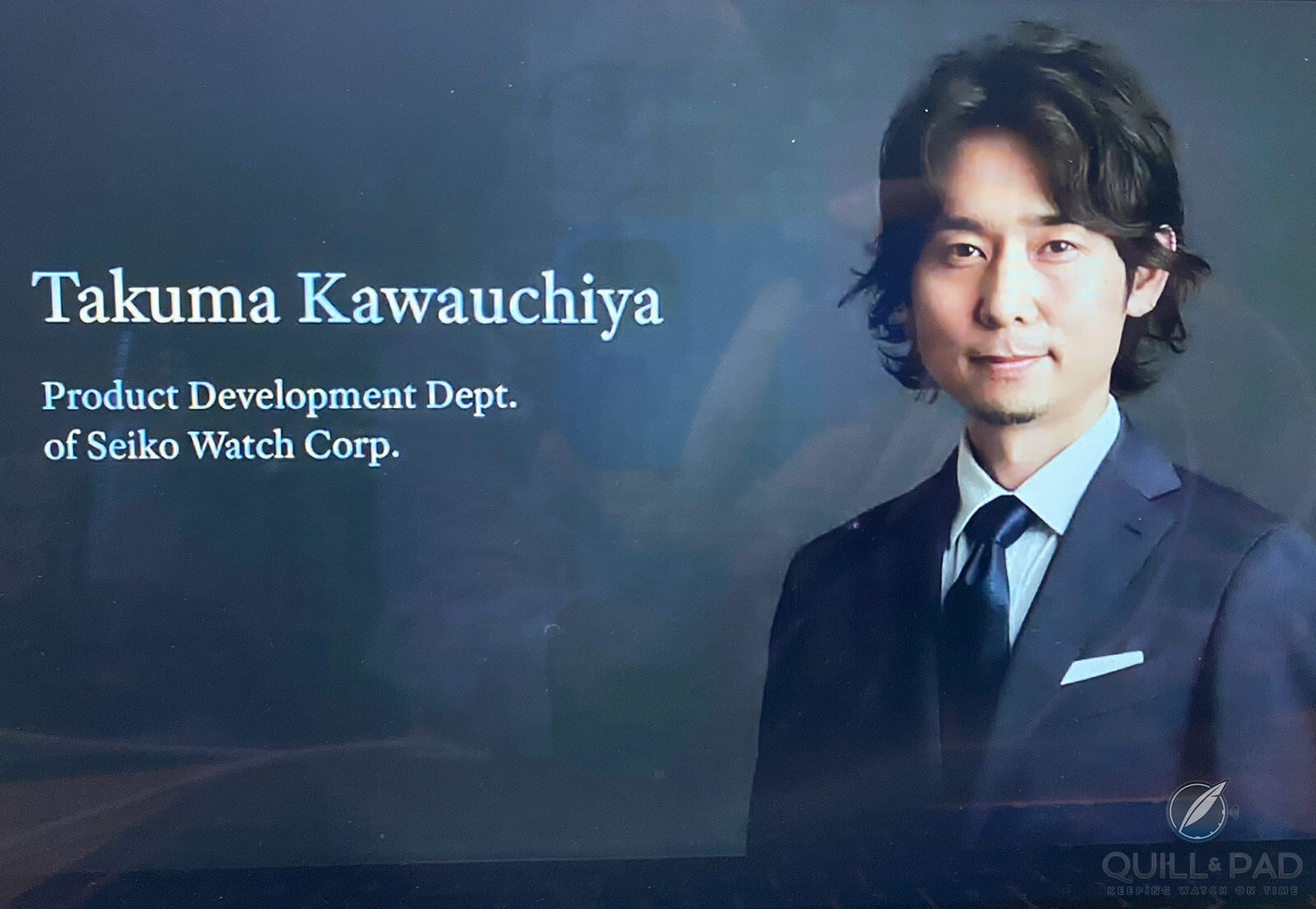
Takuma Kawauchiya, the ‘brain’ behind the Grand Seiko T0, discussed the invention with journalists over Zoom (photo Elizabeth Doerr)
Grand Seiko has repeatedly proved its ability to produce highly accurate and expertly made mechanical, quartz, and Spring Drive movements. This led to movement designer Takuma Kawauchiya deciding in 2012 that he would combine all the knowhow and skills the brand had acquired over the preceding decades for an ultra-precision watch built around a tourbillon (something the brand had not done before) with the addition of a constant force mechanism.
The goal was unquestionably fine watchmaking calling upon historical mechanisms to be combined with modern manufacturing and engineering to create something only Grand Seiko could produce. The result was years of development leading to the debut of the T0 Constant Force Tourbillon concept movement, a mechanism so precise it beats the already hyper-accurate Spring Drive and is fully and inarguably mechanical.
What is the Grand Seiko T0 Constant Force Tourbillon?
At its core, the T0 Constant Force Tourbillon takes some of the structure from Caliber 9S65 then goes off to the races. Using the basic structure for the gear train, mainspring, setting lever, and escapement, the rest could not be less like the classic 9S65 – and it’s easy to see why.
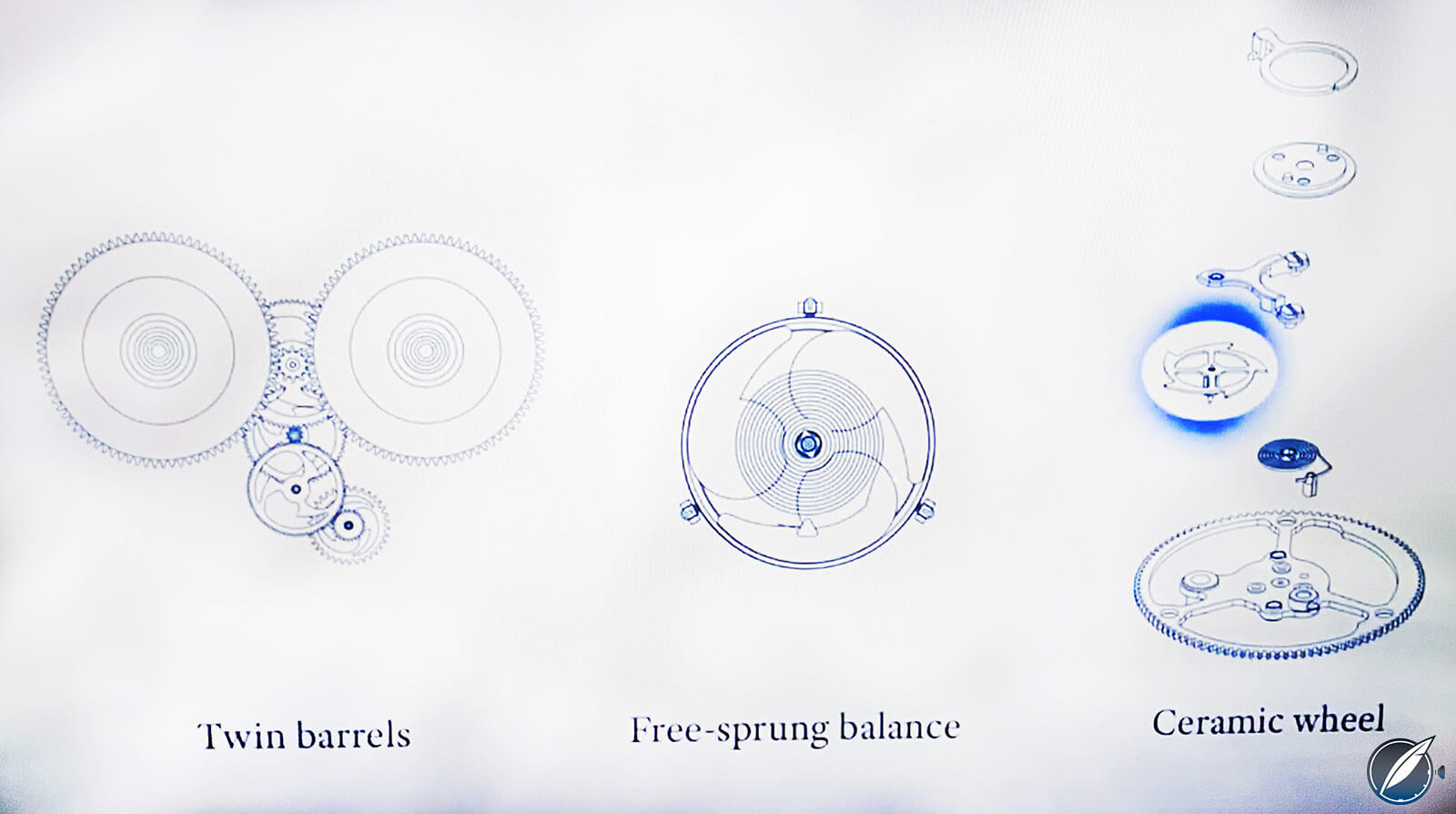
Takuma Kawauchiya discussed the Grand Seiko T0 with journalists over Zoom (photo Elizabeth Doerr)
First, the T0 has twin mainsprings working in parallel to help push the large tourbillon carriage and charge up the constant force mechanism, guaranteeing 50 solid hours of consistent torque and a total usable power reserve of 72 hours.
Being pedantic, the mainsprings don’t push on the tourbillon carriage at all; that is the job of the onboard remontoir spring of the constant force mechanism. This is why the movement is called “the Constant Force Tourbillon”: it literally is a tourbillon with a constant force mechanism within the tourbillon itself.
While this isn’t technically the first time in history this has been done it is a very uncommon mechanism choice, making this kind of tourbillon extremely challenging.
So why would Kawauchiya go this route? Easy answer: for the same reason Grand Seiko has focused on innovations for the precision and accuracy of its watches for the last 60 years. It makes for a better timepiece. Let’s go step by step.
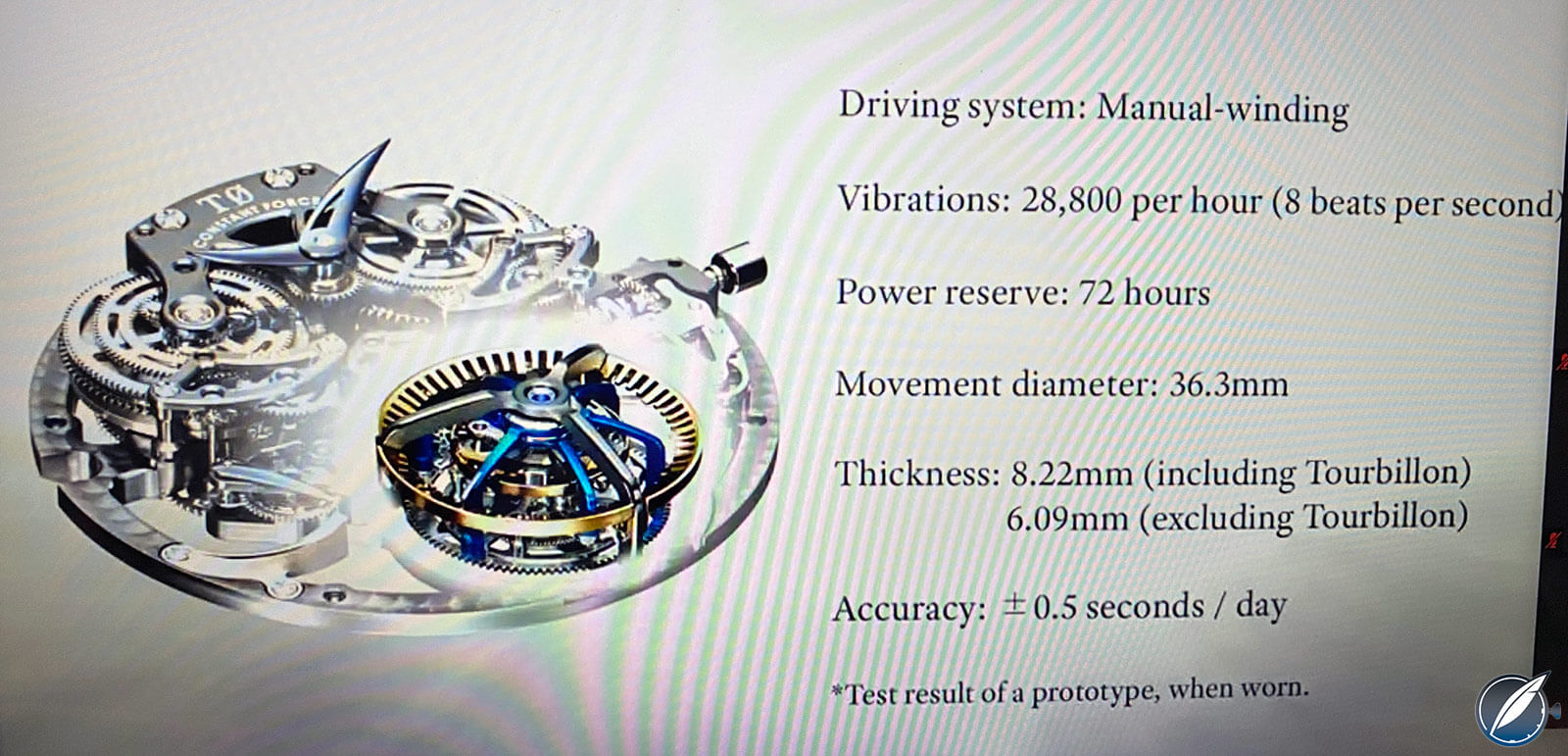
Takuma Kawauchiya discussed the Grand Seiko T0 with journalists over Zoom (photo Elizabeth Doerr)
Fully wound, a mainspring delivers more power (torque) than when it is mostly unwound as its torque curve is not flat and consistent from beginning to end. This means that when the mainspring is nearly unwound, the balance gets less power, making it oscillate faster and measure time less accurately. A constant force mechanism acts as a buffer between the mainsprings, gear train, and escapement to eliminate all the variable forces and provide – you guessed it – constant force.
It does this using the addition of a small spiral spring attached to a wheel that is strong enough to provide a consistent amount of power over a short period of time; the spring takes over for the mainsprings in delivering power to the escapement. The constant force mechanism releases once every second (or every eight beats of the balance wheel) to recharge the spring and provide the force to push the balance wheel.
In many designs, every single gear between the constant force remontoir spring and the escape wheel robs that spring of some torque and possibly introduces variations. So the best bet is to get the remontoir spring as close to the escapement as possible.
How did Grand Seiko do this? By adding the spring directly next to the escape wheel to drive the carriage itself.
This is how the T0 Constant Force Tourbillon works: the remontoir spring (and constant force mechanism) is mounted within the tourbillon carriage and creates the rotation of the tourbillon.
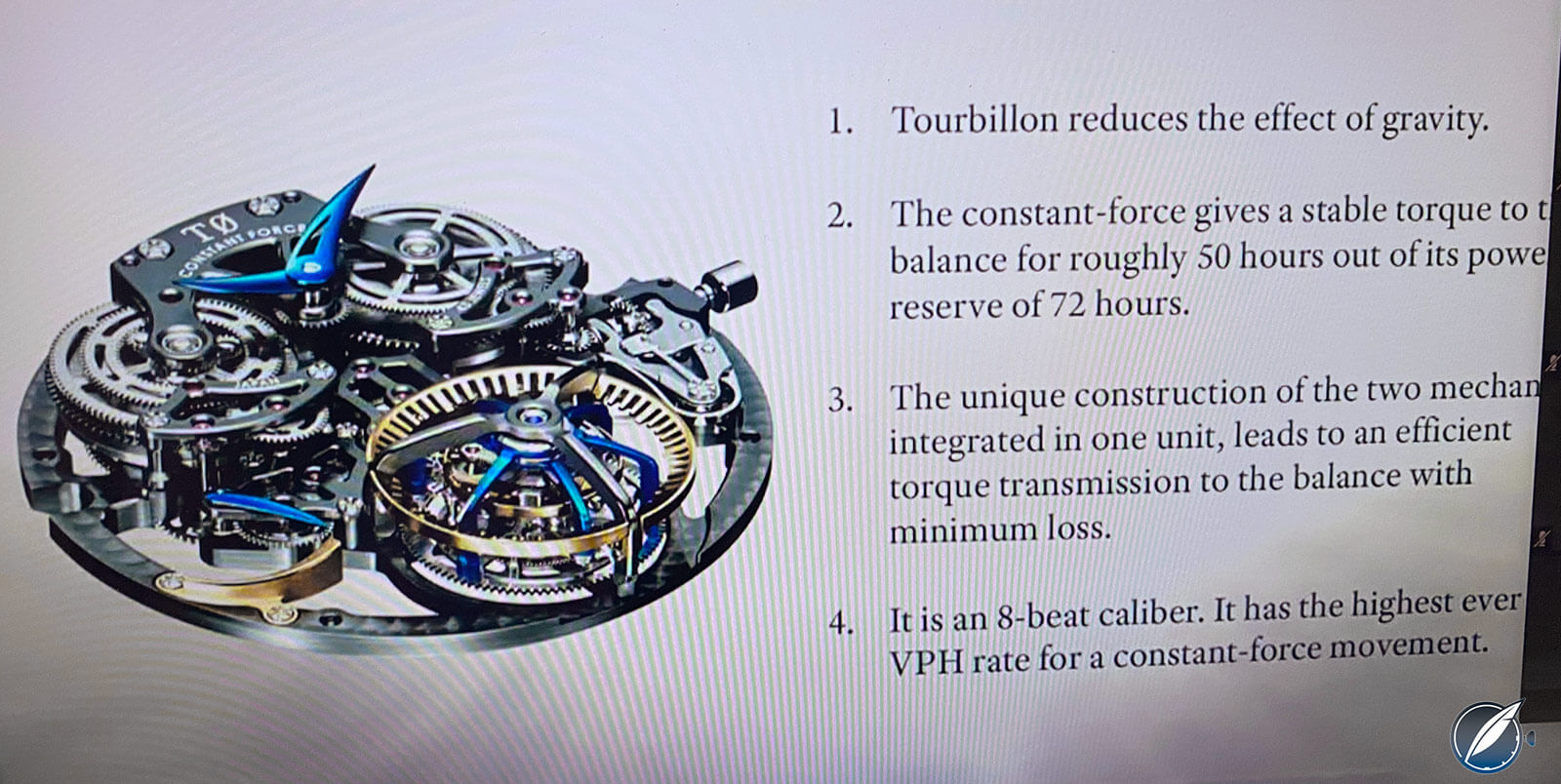
Takuma Kawauchiya discussed the Grand Seiko T0 with journalists over Zoom (photo Elizabeth Doerr)
The mainsprings have one main job: to wind up that small spring so it can do its job. The parallel mainsprings on the T0 have enough torque to fully charge the remontoir spring for 50 hours, after which it lacks the power to consistently fully rewind the small spring, which introduces variation to the escapement once again.
Technical achievements combine for excellence
That smooth torque curve was no small feat; it required a lot of problem solving to provide the smoothest transfer of power possible with the precision and robustness known from Grand Seiko. One feature that helps with this is the addition of a proprietary low-friction coating on the center and third wheels, which significantly minimizes friction due the increased torque of the mainspring barrels.
Still, that torque is going to make its way through the gear train and it could cause damage to the constant force mechanism since it needs to lock and unlock every second to charge the remontoir spring, risking the stop wheel of the mechanism.
This was solved by making the stop wheel from solid ceramic, a hard and durable material resistant to abrasion and impacts, which is also low friction when polished smooth.
Still, the gear train itself needed more consideration, and it came in the form of MEMS, which stands for Micro Electro Mechanical Systems, the proprietary Seiko method to create high-detail, microscopic components by building a component layer by layer in some form of metal – often silicon – but it can be a variety of other materials. The components can be made hyper accurately, down to the micron level, resulting in extremely smooth and uniform shapes.
This works wonders for gear tooth profiles that need to transmit energy smoothly and as free from friction as possible through a gear train. For this reason, MEMS was used not only to make the escapement lever and escape wheel, as is usual for Grand Seiko, but for almost all gears in the gear train. This further helps reduce friction, smooths out power delivery, and avoids any binding issues, even on the microscopic scale.
Common for many high-precision watches, Kawauchiya chose to use a free-sprung balance without a regulator. While more difficult to design and assemble, it reduces the chances of the timing changing after a strong shock to the balance since there are no regulating pins that can get bumped or fine adjustment that can dislodge or shift.
Combining this with a higher beat rate than most tourbillons have – and especially most constant force mechanisms – the balance is naturally less prone to variation. A higher number of beats per hour helps any balance self-correct after a shock, and thanks to the preservation of angular momentum (a spinning object with mass wants to keep spinning and resist changing direction) any shocks will more quickly be averaged out.
It all comes together
After all this hard work and ingenuity to make a stable and consistent oscillator, how do you halt the mechanism to set the watch to the closest second and then get it going again without losing that accuracy?
Short answer: it is a difficult problem. However, Grand Seiko had also already solved that problem back in 1964 for a stopwatch used in the Summer Olympics in Tokyo. The hacking feature basically assists the tourbillon carriage by giving it a push to start its rotation. And while that is important for a tourbillon beating at 2.5 Hz, it is crucial for the 4 Hz frequency of the T0.
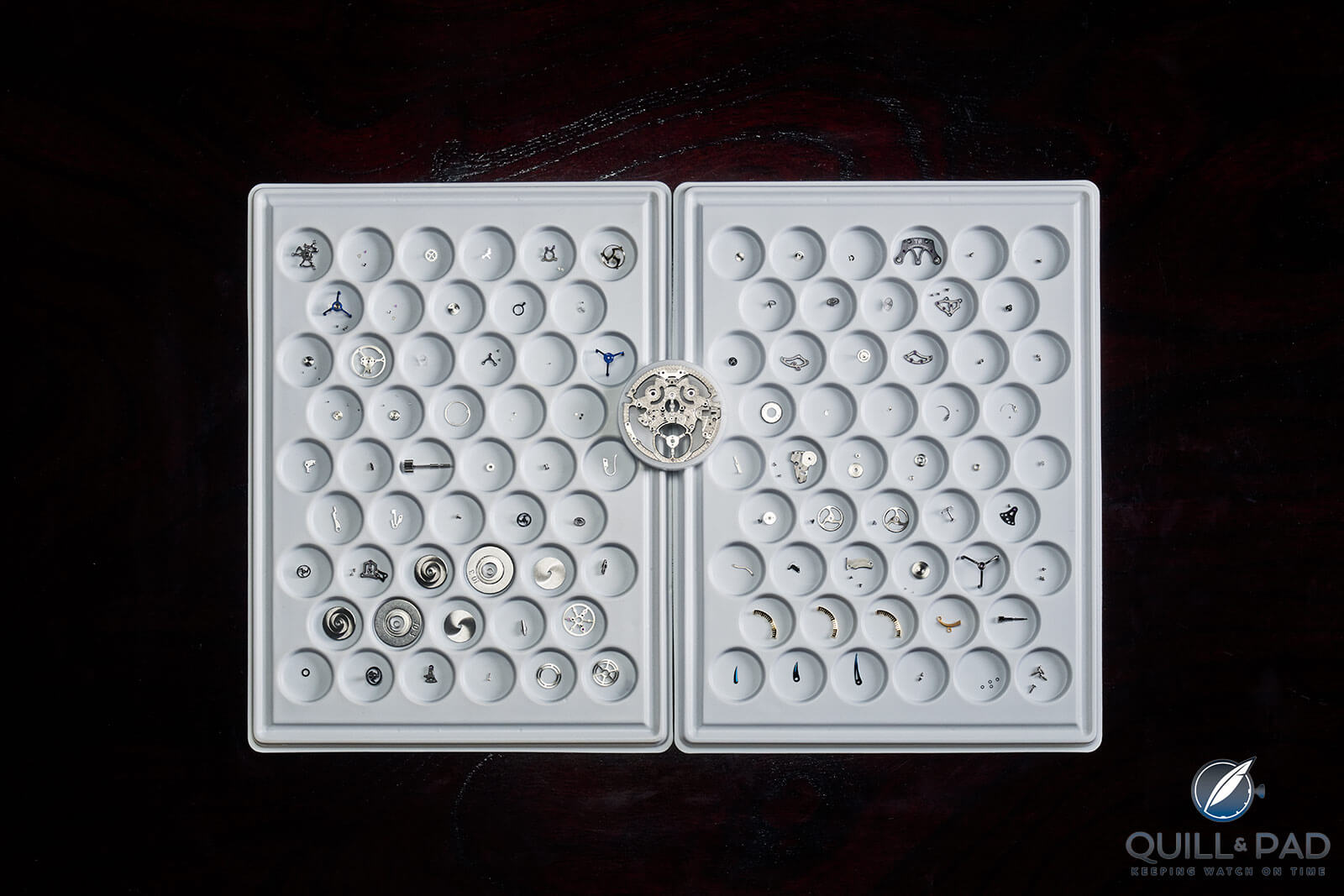
Components for the Grand Seiko T0 Constant Force Tourbillon
When all of this comes together into the creation that is the T0 Constant Force Tourbillon, we have one incredible movement. It is also finished to a level that rivals most brands, reminding me of how Roger Dubuis finishes movements – and we all know that RD movements bear the Geneva Seal – so that shows the level Grand Seiko is attaining.
Even with the finishing being so well done, the true test is the chronometric performance since that was the entire purpose of creating the T0.
In lab conditions, the T0 Constant Force Tourbillon performed around +/-0.5 seconds per day, which comes out to a movement that is 99.9994 percent accurate. While it will surely not achieve those results under normal wrist conditions, it still is as good as – or better than – the Spring Drive, which is quartz regulated.
I don’t know about you, but I have absolutely no qualms calling this one of the pinnacles of 2020.
The only issue that remains is that it is a concept movement with no plans for commercialization (yet), even though the research and solutions will likely find their way into other models. But who knows: perhaps Grand Seiko will double down on this style of movement development and we will see a whole line of more avant-garde, experimental pieces designed to stir the pot a little bit.
Kawauchiya has hope that it will continue forward with development and that features from it will be utilized throughout Grand Seiko. I hope he is right.
But one thing is for sure: Grand Seiko finally did it. The T0 Constant Force Tourbillon is a masterpiece like all of the other Grand Seiko and Credor masterpieces that have come before, but it breaks the mold for Grand Seiko.
Hopefully there will be such a good reaction that it will boost the confidence of Grand Seiko to stretch its design legs and go for a run, and perhaps watch fans and collectors who haven’t given Grand Seiko its full due will join in. The brand has so many incredible offerings, and the T0 Constant Force Tourbillon is just a sugar-coated appetizer to all the rest of what the brand has created.
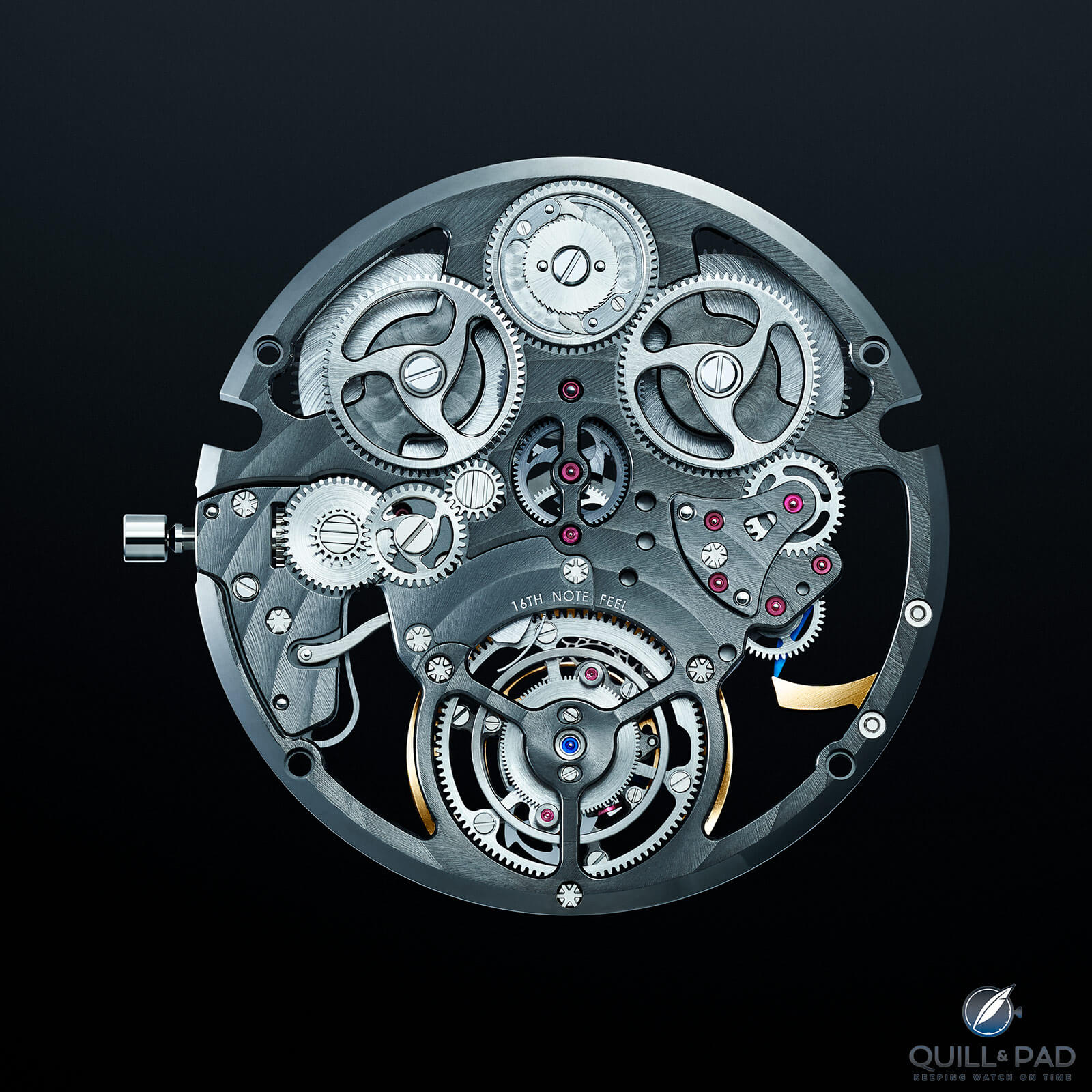
Grand Seiko T0
The T0 Constant Force Tourbillon also isn’t a watch, but a movement (at time of writing), and is not for sale, so there’s no need to break it down any further. I’ll just say that I love this darn thing and I hope you all do too! Since then the Grand Seiko Kodo Constant Force Tourbillon has been released and won the Chronometery prize at the 2022 Grand Prix d’Horlogerie de Genève (GPHG).
For more information, please visit www.grand-seiko.com/us-en/special/T0-story.
* This article was first published on December 27, 2020 at Grand Seiko T0 Constant Force Tourbillon: I Couldn’t Believe My Eyes.
Quick Facts Grand Seiko T0 Constant Force Tourbillon
Movement: manual winding Caliber T0 Constant Force Tourbillon, 72 hours power reserve, 28,800 vph/4Hz Hz frequency, free-sprung balance in 60 second, constant force tourbillon, constant force mechanism
Functions: hours, minutes, dead beat hacking seconds; power reserve indicator
Limitation: concept movement
Price: not for sale
You may also enjoy:
Presenting ‘Making Time’: The Greatest Watch Film Ever Made (In My Extremely Biased Opinion)
Grand Seiko Kodo Constant Force Tourbillon: Grand Seiko Unleashed
Grand Seiko: Already Big In Japan And Getting Bigger Near You
Grand Seiko Elegance SBGW263 And SBGW264: Using The Principles Of Japanese Aesthetics
Grand Seiko 1960 Re-Creations: Celebrating A Turning Point
Why I Bought It (Despite The Strap And Buckle): Grand Seiko Blue Snowflake Reference SBGA407
Visiting Seiko’s Haute Horlogerie Micro Artist Division
Seiko’s Credor Fugaku Tourbillon: A Masterpiece Of Horological Art.
Leave a Reply
Want to join the discussion?Feel free to contribute!



I think the Academy and the Jury missed an opportunity to call this this the Grand Prix winner at the GPHG 2022 . My humble opinion as former membre du jury GGHG 2013-2016 .
There was never any doubt that Seiko could do this if they wanted to.
As for The Swiss giving credit to The Japanese???? No chance.